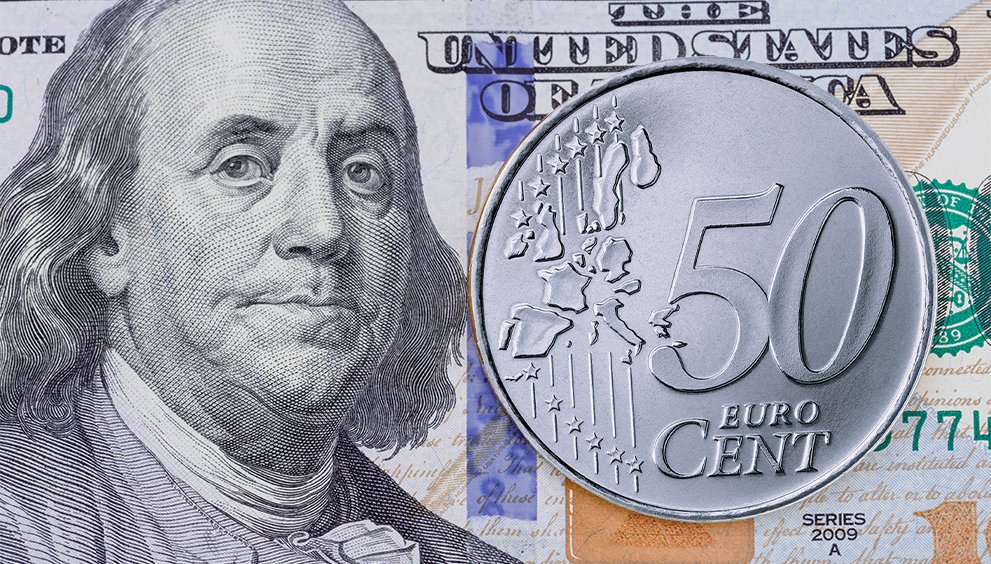EUR/GBP Struggles Following Mixed German Data

EUR/GBP hovers near 0.8390 as Germany’s fiscal reforms signal major debt restructuring, supporting the euro. German leaders, including the likely new Chancellor Friedrich Merz, have agreed to establish a €500 billion infrastructure fund alongside debt reforms. However, market expectations of accelerated inflationary pressures due to German debt restructuring could reinforce the European Central Bank’s (ECB) dovish stance, pausing the monetary policy easing cycle in April. On Thursday, the ECB’s decision to reduce its Deposit Facility rate by 25 basis points (bps) to 2.5% aligned with market expectations, marking the fifth consecutive interest rate cut by the ECB. During the press conference, ECB President Christine Lagarde highlighted that increased defence and infrastructure spending remains “a work in progress” and the ECB “needs time” to assess the impact. On the economic front, industrial output rose by 2% month-on-month, higher than the anticipated 1.5% increase, following a revised decline of 1.5% in December. German industrial production fell by 1.6% year-on-year in January, compared to a revision of -2.2% for December. Eurozone retail sales unexpectedly fell 0.3% in January after being flat in December. Economists had predicted a 0.1% increase. Consumer spending rose by 1.5% year-on-year, below the estimated 1.9% and prior 2.2%.
On the other hand, the sterling underperforms against its major peers, following Bank of England (BoE) Monetary Policy Committee (MPC) member Catherine Mann’s reaffirmation of the need for a “gradual and cautious” monetary policy easing approach. She also stated that the premise for a gradualist approach is “no longer valid” due to “substantial volatility” arising from financial markets, particularly from “cross-border spillovers.”
With UK data remaining scarce for the day, optimism surrounding the European defence investment plan and recent European economic data will significantly influence the EUR/GBP exchange rate.
USD/CAD Slides Amid Weak Employment Figures
USD/CAD trades near 1.4372 as ongoing trade uncertainties pressure the Canadian dollar (CAD). On Saturday, China declared it would impose a 100% tariff on Canadian rapeseed oil, oil cakes, and peas and a 25% levy on Canadian aquatic products and pork. This action, in retaliation to the tariffs Canada implemented in October, escalates trade tensions and adds complexity to the larger trade conflict, which is primarily influenced by Trump’s tariff policies. On the data front, the Canadian economy added 1.1K new jobs, whereas economists had anticipated employers would add 20K fewer job seekers than the 76K reported in January. The unemployment rate remains steady at 6.6%, compared to estimates of 6.7%. Average hourly wages, a key measure of wage growth, increased robustly to 4% from the previous figure of 3.7%. Furthermore, growing market speculation that Canadian Prime Minister Mark Carney could call an election as early as Monday could add fluctuations to the currency. Weak labour market data will likely enhance market predictions that the Bank of Canada (BoC) will reduce interest rates once more in its monetary policy meeting on Wednesday.
The US dollar faces challenges due to rising concerns over a potential slowdown in the United States (US) economy, as the US Dollar Index (DXY) declines for the fifth consecutive day. Friday’s Nonfarm Payrolls (NFP) rose by 151,000 in February, missing the anticipated 160,000. January’s job growth decreased to 125,000 from the previously reported 143,000. The unemployment rate rose to 4.1%, up from previous estimates and the earlier figure of 4%. Meanwhile, average hourly earnings, a key indicator of wage growth, increased at a slower rate of 4% compared to estimates of 4.1% year-on-year. Month-on-month wage growth rose by 0.3%, as anticipated. On Sunday, US Commerce Secretary Howard Lutnick announced that the 25% tariffs on steel and aluminium imports, set to begin on Wednesday, will probably not be delayed. These tariffs, introduced by US President Donald Trump in February, affect imports from key foreign suppliers like Canada and Mexico, including finished metal products.
In the upcoming sessions, apart from the BoC Rate Statement and BoC Press Conference, the US economic docket, including Unemployment Claims, inflation figures, JOLTS Job Openings, Prelim UoM Consumer Sentiment and Prelim UoM Inflation Expectations, will significantly influence the USD/CAD’s movements.

NZD/USD Rebounded Despite Improved Risk Appetite
NZD/USD recovered near 0.5728, as disappointing Chinese Consumer Price Index (CPI) data for February weighs on the kiwi. China’s CPI decreased at an annual rate of 0.7% in February, following a reported growth of 0.5% in January. The market consensus anticipated a decline of 0.5% for the reported period. Chinese CPI inflation registered at -0.2 % month-on-month in February compared to January’s 0.7%, which was softer than the -0.1 % estimate. Meanwhile, China’s Producer Price Index (PPI) fell by 2.2% year-on-year in February after a 2.3% drop in January. This data was below the market consensus of -2.1%. In February, China’s trade balance stood at CNY122 billion, slightly down from CNY752.91 billion in the preceding month. Exports increased by 3.4% year-on-year in February, down from 10.9% in January. Meanwhile, imports decreased by 7.3% yearly during the same time frame, compared to a prior drop of 1.3%. Weak household demand and sluggish consumption in China have increased concerns about the world’s second-largest economy, adding selling pressure on the China-proxy Kiwi. On the geopolitical front, China’s retaliatory tariffs of up to 15% on certain US agricultural products will take effect today. These tariffs were in response to last week’s US tariff increase from 10% to 20% on Chinese imports. This could raise global trade tensions and dampen investors’ risk appetite, affecting the currency.
Rising concerns over the United States (US) economic outlook and escalating global trade conflicts due to President Donald Trump’s tariff agenda continue to pressure the greenback. Additionally, weaker-than-expected US February Nonfarm Payrolls (NFP) data provoked the market sentiment around the Federal Reserve’s (Fed) monetary policy stance. On Friday, San Francisco Fed President Mary Daly emphasised the increasing uncertainty faced by businesses. However, she stated that since the economy and interest rates are in a “good place,” the Fed should refrain from making any hasty decisions. Meanwhile, Fed Chairman Jerome Powell remarked on the same day that the US central bank could afford to observe the effects of President Donald Trump’s bold policy moves before making further changes to interest rates. He also noted that the prevailing policy uncertainty complicates the Fed’s ability to implement policy adjustments.
Key economic data and developments in global trade tensions will drive the NZD/USD exchange rate in the upcoming sessions.

AUD/JPY Sinks Amid BoJ Rate Hike Bets
AUD/JPY struggled near 93.09, as hawkish expectations of the Bank of Japan (BoJ) and the safe-haven demand supported the yen. On Monday, Japan’s labour ministry reported a 3.1% increase in base pay in January, the largest rise since October 1992. However, nominal wage growth slowed to 2.8%, the lowest in three months, down from 4.4% in December. Real cash earnings fell by 1.8%, ending two months of gains due to persistent inflation. With expectations of continued substantial wage hikes, particularly in labour unions seeking 6.11% increases for full-time and 7.16% for part-time workers, the Bank of Japan is likely to raise interest rates further to combat demand-driven inflation. Recent comments from Deputy Governor Shinichi Uchida indicated further interest rate hikes, fuelling market anticipation of the BoJ’s hawkish policy stance. However, Trump’s trade policies and a global trade war further bolster the JPY’s relative safe-haven status, benefiting the currency.
On the other hand, the recent Reserve Bank of Australia (RBA) Meeting Minutes indicated a cautious monetary stance, steering market sentiment. However, stronger-than-expected GDP growth and trade data from Australia could strengthen the Aussie. Australia’s GDP grew by 0.6% quarter-over-quarter in Q4 2024, surpassing Q3’s 0.3% and exceeding market expectations of 0.5%. On an annual basis, GDP rose to 1.3% from 0.8% in the previous quarter. Australia’s trade surplus increased to A$5.62 billion in January, higher than the expected A$5.5 billion and up from the previous A$4.92 billion (revised from A$5.08 billion). Exports rose 1.3% month-over-month, reaching an 11-month high, while imports fell by 0.3% after a sharp 5.9% rise in the prior month.
On the global front, risk sentiment soured as investors reassessed developments in international trade. China’s retaliatory tariffs on certain US agricultural products took effect on Monday in response to last week’s increase in US tariffs from 10% to 20% on Chinese imports, considering China’s role as Australia’s largest trading partner. China’s Consumer Price Index (CPI) fell by 0.7% YoY in February, exceeding expectations of a 0.5% decline and marking the first instance of deflation since January 2024. Monthly CPI inflation stood at -0.2%, down from January’s 0.7%. China’s Producer Price Index (PPI) dropped by 2.2% YoY, slightly surpassing the expected 2.1% decline, representing the slowest fall since August 2024. Broader market sentiment regarding global trade tensions will significantly influence the AUD/JPY exchange rate.

Want to know how you can manage currency fluctuations while travelling? Tap here to read more!


 English
English 





































































































